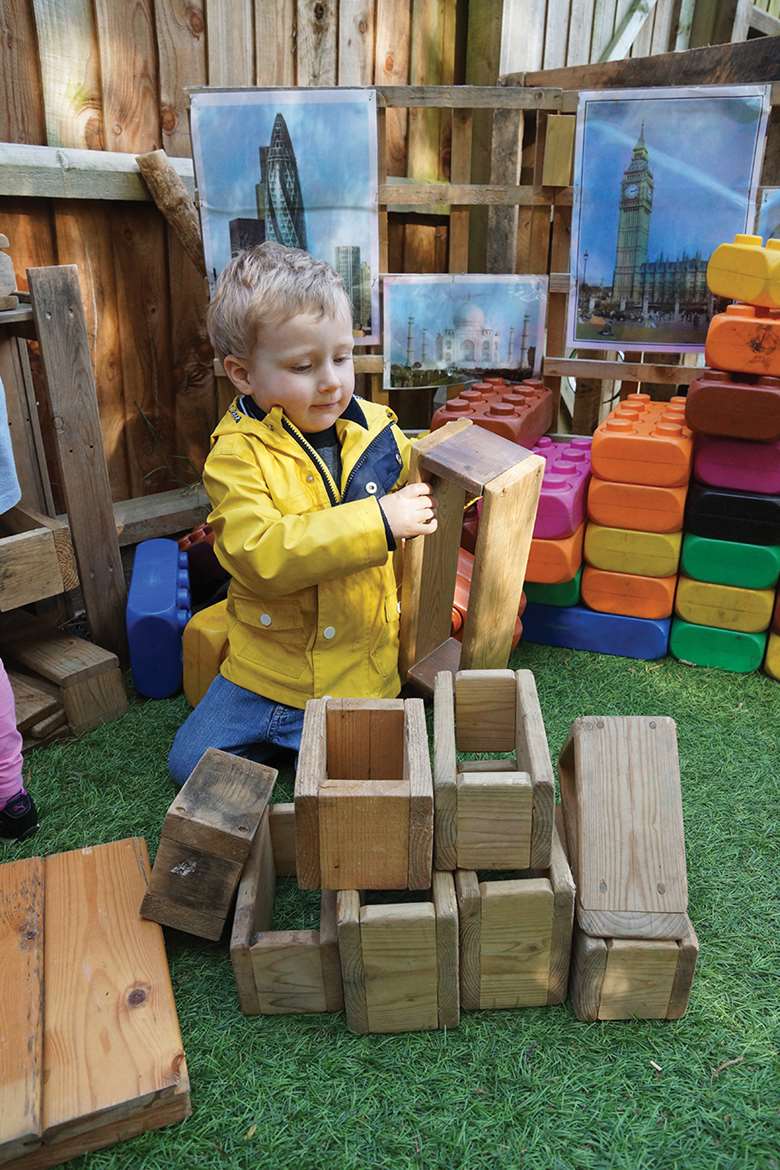Cambridge Day Nursery
Jo Stephenson
Tuesday, May 29, 2018
City-centre nursery prioritises outdoor play, with the garden a seamless part of the setting.

- During the summer months, children spend 90 per cent of their time outdoors
- Outdoor learning focus has particularly helped boys achieve developmental goals
ACTION
Despite its city centre location, the Cambridge Day Nursery prides itself on providing opportunities for outdoor play that managers see as key to learning and development.
In the summer months, children spend as much as 90 per cent of their time outdoors and even in winter can expect to be outside up to 65 per cent of the time.
Outdoor play and learning is central to the setting's philosophy and integral to the day-to-day routine, explains Rachel Watson, senior nursery manager at the long-established private day nursery, which celebrates its 40th birthday this year.
"The outdoor space is seen as just part of the nursery so we don't really differentiate," she says.
The setting is open five-days-a-week from 8am to 6pm and caters for children from birth to five. There are currently 134 children on the nursery roll with an average of 82 attending each day.
At its last inspection in 2017, the nursery was rated "good" by Ofsted for all key areas of care.
"The outdoor facilities are easily accessible, offering a range of exciting activities that children thoroughly enjoy," said the inspection report. "Children of all ages are able to make choices as to where they want to play and independently move between the indoor and outdoor provision."
Meanwhile, the nursery's forest school - complete with forest classroom - at the far end of the garden provides "additional rich outdoor experiences", added inspectors.
All children - including the very youngest - have free access to outdoor space. The baby room leads into the "baby garden" but toddlers can also access the main nursery garden if they want to.
"As soon as the babies are mobile - either crawling or walking - they can access the outside area as and when they wish to," says Watson.
The main garden includes outdoor play equipment such as a climbing frame with slide, a water play area and mud kitchen, space for growing vegetables and a den known as the "Hobbit house".
Children in the pre-school area upstairs can also come up and down into the garden. Staff all have walkie talkies and use them to radio down when children are on their way out.
The nursery has a key person system with staff basing activities around children's interests and if that takes them outside "then all the better", says Watson.
Staff can expect to be out in all weathers, so the nursery provides each team member with a winter coat and woolly hat. All staff and children are given sun hats and sun cream, and risky play, including climbing trees, is encouraged.
Some children simply find it easier to learn and engage outdoors, explains Watson. She illustrates this by explaining that one child with speech and language difficulties "didn't really speak inside the nursery but as soon as they came out into the garden they would start talking".
Activities like playing in the mud may seem like messy fun but making marks with fingers and sticks can be the precursor to learning to write.
"There are marking opportunities in all parts of the outdoor area. Those who don't wish to learn inside can make marks in the mud which then changes into them writing their name," says Watson.
Some children who attend the setting may have limited opportunities for outdoor play otherwise, explains Watson.
"In Cambridge there is a lot of development going on. Playing fields are being reduced and there is a lot of new housing with very small gardens and so it's just about allowing the children to have access to the outdoors rather than them being stuck inside," she says.
IMPACT
The opportunity to play and learn outdoors boosts physical and social skills, promotes resilience and helps ensure children are independent and confident and able to thrive when they move onto primary school or another childcare setting, says Watson.
In all, 98 per cent of children who moved on to school in the 2016/17 academic year were able to write their name clearly. Around half were boys who traditionally lag behind girls when it comes to achieving early learning goals. Most of those boys primarily did their learning outside, says Watson.
Virtually all children enjoyed a smooth transition to school. Of those who moved on earlier, 83 per cent were secure in the Early Years Foundation Stage development goals for children aged 40 to 60 months.
This article is part of CYP Now's special report on early childhood development. Click here for more




